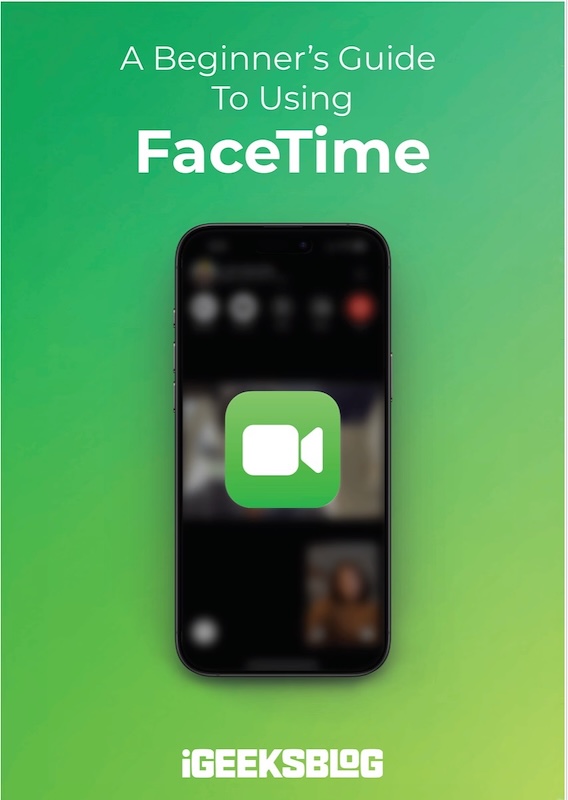
FaceTime Like a Pro
Get our exclusive Ultimate FaceTime Guide 📚 — absolutely FREE when you sign up for our newsletter below.

FaceTime Like a Pro
Get our exclusive Ultimate FaceTime Guide 📚 — absolutely FREE when you sign up for our newsletter below.
iPhone 17 Pro gaming review dives into Apple’s new vapor chamber cooling. Does it truly boost performance? Find out in our hands-on test today.
You know that feeling when your phone turns into a pocket-sized toaster halfway through a ranked match? iPhones have come a long way since those days. My two-year-old iPhone 15 Pro hasn’t had any major heating issues while gaming. However, no matter how powerful the processor is, it eventually gets heated up during longer gaming sessions. Then frame drops creep in and I sometimes have to set it aside to cool off.
This year, Apple finally decided to fix that. The iPhone 17 Pro and 17 Pro Max come with a built‑in vapor chamber cooling system. In theory, it should keep the processor cooler for longer gaming sessions. I’ve spent the past week pushing it to the limit to see if it actually changes the game or if it’s just another marketing buzzword.

Inside the iPhone 17 Pro is a thin aluminum plate filled with deionized water. The water turns into vapor near the A19 Pro chip, where it gets hot and changes back to liquid at cooler parts like the unibody aluminum frame around the phone, repeating this cycle thousands of times per second. It works as a compact cooling system inside the phone, sealed and silent, and much more efficient than the old graphite sheet used in the 16 Pro.
Apple says this setup, combined with the new aluminum unibody, delivers 40% better sustained performance. Sounds great on paper, but what happens in real gaming?
I tested four heavy hitters: Genshin Impact, Call of Duty Mobile, Resident Evil Village, and Asphalt 9 and all set to max graphics and 120Hz refresh rate.

After 10 minutes, both the iPhone 17 Pro and 16 Pro performed identically. The advantage of faster A19 Pro chip was not at all visible in either of the games. To be honest, Apple’s A-series current chips are very powerful and can easily handle any mobile game you through at them. But after 30 minutes, things started to change:
Even after an hour, the 17 Pro stayed cool at around 43°C, while the 16 Pro reached almost 49°C, feeling uncomfortably hot in hand.
In extended gaming sessions (90 minutes+), the 17 Pro still managed smoother frame pacing and quicker texture loads, while the 16 Pro began showing micro-stutters in scenes with lots of effects. The vapor chamber really helps spread the heat away from the A19 Pro chip and into the phone’s frame, keeping it cool enough to maintain performance.
To see how the vapor chamber affects real performance, I ran two rounds of synthetic tests: once before gaming and again after 90 minutes of continuous play.
Before Gaming:
| Test | iPhone 17 Pro | iPhone 16 Pro | iPhone Air |
|---|---|---|---|
| Geekbench Multi-Core | 9,923 | 8,189 | 8,620 |
| AnTuTu 10 | 2,430,575 | 1,871,052 | 2,095,675 |
| 3DMark Wild Life Extreme | 5,868 | 4,898 | 5,103 |
| Peak Temperature | 35.2°C | 36.8°C | 35.9°C |
After 90 Minutes of Gaming:
| Test | iPhone 17 Pro | iPhone 16 Pro | iPhone Air |
|---|---|---|---|
| Geekbench Multi-Core | 9,110 | 6,780 | 7,210 |
| AnTuTu 10 | 2,225,000 | 1,560,000 | 1,850,000 |
| 3DMark Wild Life Extreme | 5,420 | 3,870 | 4,250 |
| Thermal Stability (1hr-90mins) | 89% | 74% | 78% |
| Peak Temperature | 44.2°C | 49.1°C | 46.8°C |
The results tell the story. The iPhone 17 Pro not only starts higher but holds those numbers longer. Even after 90 minutes of nonstop gaming, it retains over 89% of its original score in most tests. The iPhone 16 Pro, meanwhile, dips sharply as its temperature climbs, losing around 20% of its power by the hour mark.
The iPhone Air also throttles early due to the lack of a vapor chamber and smaller thermal mass. Simply put, Apple’s new cooling system helps the 17 Pro stay cooler and faster for far longer.
Gaming isn’t the only area where this matters. I tried exporting a 10-minute 4K ProRes video on both phones. The iPhone 17 Pro finished the task in 5 minutes and 12 seconds, while the 16 Pro took 6 minutes and 38 seconds and got noticeably warmer around the camera module.
Battery life benefits too. Because the phone runs cooler, it doesn’t drain as aggressively. After a two-hour mixed gaming and benchmark session:
These are small but meaningful improvements. Over months, that reduced heat will also slow down battery wear.
Let’s be clear, this isn’t magic. The iPhone 17 Pro still throttles under extreme heat, just much later and more gracefully. You’ll notice smoother gameplay, fewer stutters, and a more comfortable phone during long sessions. The biggest win is that it doesn’t get burning hot anymore.
Meanwhile, the iPhone Air simply can’t handle extended performance tasks. After 25 minutes of Genshin Impact, it drops from 60fps to around 40fps and warms up to 47°C. It’s fine for casual use, but gamers will see the difference instantly.
You won’t see a night-and-day jump in benchmarks, but in real use, especially after 30 minutes, it’s a whole new experience. For any gamer, iPhone 17 Pro can show it’s advantage with the fastest A19 Pro Processor Apple has ever released and the vapor chamber which keeps that processor cool during longer sessions.